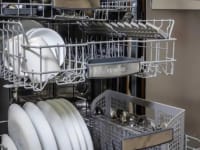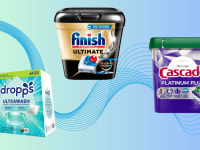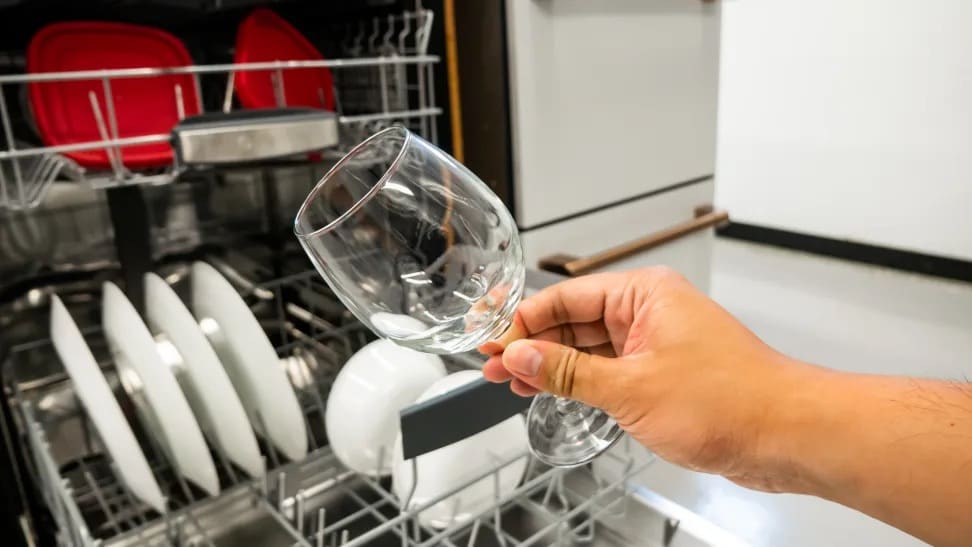 Credit:
Reviewed / Jonathan Chan
Credit:
Reviewed / Jonathan Chan
Products are chosen independently by our editors. Purchases made through our links may earn us a commission.
A good dishwasher cleans your dishes. A great dishwasher dries dishes, too.
No one wants to put away wet dishes, and it isn’t a healthy practice either. But when it comes to drying dishes, it’s not as simple as it sounds, and not all dishwashers are created equal.
In fact, appliance manufacturers employ four major drying technologies to get your dishes droplet-free, and we’ve encountered all of them in our decades-long history of testing dishwashers.
Here, we'll explain the evolution of dishwasher drying methods, go over the pros and cons of each method and how they affect your clean-up routine, and recommend the dishwashers that actually dry dishes.
Four main dishwasher drying mechanisms, explained
1. Electric heating element: The energy-inefficient old guard
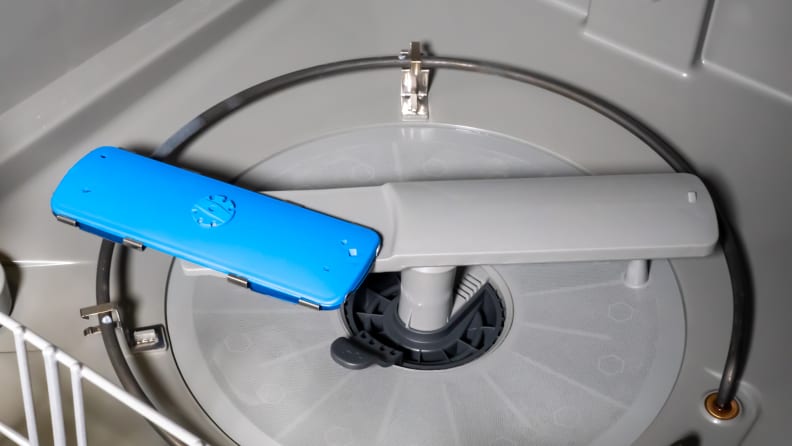
Even though it's not energy efficient, many entry-level dishwashers still use a built-in heating element.
If you've ever used an electric stove or oven, you're familiar with how electric heating elements work: It's a similar element in a different context.
While this old method was effective, it’s also an energy hog and a potential fire hazard. Since the heating element is almost always at the bottom, it means dishware there will get exposed to higher heat, which can cause damage. That's why many items are labeled "top rack only."
Also, anything plastic that slips through the racks and onto those heating elements is going to melt or burn, potentially filling your kitchen with noxious smoke—definitely bust out the air purifier if this happens!
2. Evaporation: The eco-friendly alternative
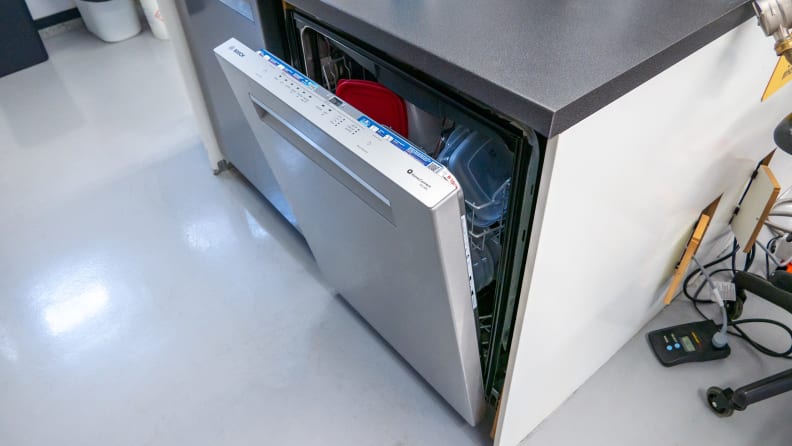
Some dishwashers, like the Bosch 500 Series SHP65CM5N, have a feature that will pop open the door automatically after a cycle finishes, allowing moisture to escape.
Evaporation is one of the most eco-friendly methods for drying your dishes, and it's relatively cheap and easy to implement.
Models like the Miele G 7566 SCVi SF and Bosch 500 Series SHP65CM5N both have features that leverage evaporation to its fullest potential.
These features typically work by using hot water, which will more readily turn into water vapor, then pop open the door of the dishwasher after a wash cycle is complete to allow all that moisture to escape.
This method simply allows evaporation to do its work more efficiently, and uses next to no additional electricity.
Even if your dishwasher doesn’t automatically open the door after a cycle, you can still take advantage of this drying method. When a wash cycle ends, leave the door open for a while before unloading. The downside is you may have to wait longer for dishes to fully dry.
Also—as with many of these drying methods—plastics can cause problems. Hot water builds up heat in ceramics and metals, which promotes faster evaporation, but plastic doesn't hold heat very well so evaporation is much slower.
If you have the time, though, it's definitely best to work smarter and not harder: Just let evaporation do its thing!
3. Heated air drying: Safer heat plus a fan
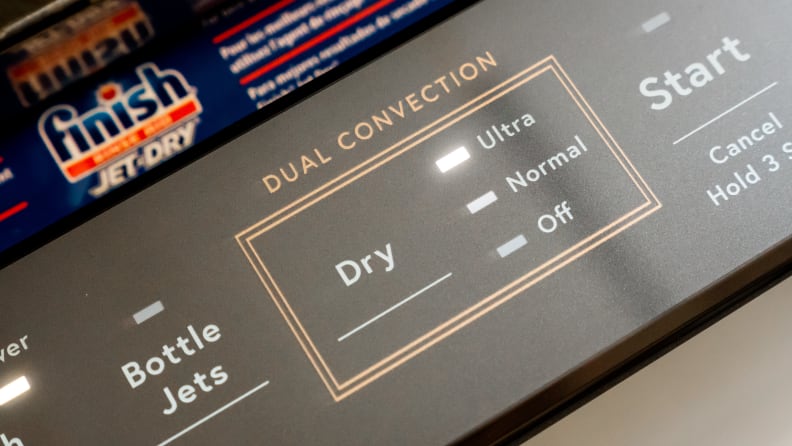
Some dishwashers use an internal heating element and a series of fans to blow dry, hot air over the dishes.
Heated drying systems basically combine an internal heating element with a fan. The air gets heated and then blown through vents placed throughout the dishwasher. This air picks up excess humidity and is then expelled from the dishwasher.
While this system is also electricity-expensive, it's more effective than an exposed heating element alone. These systems typically keep the heating element away from places you can accidentally burn yourself or your dishware, which is great news for your hands and that plastic utensil that won't stay put on the upper rack.
However, this method struggles to eliminate water that pools on plastics. Some dishwashers, like the LG LDTH7972S, compensate for this by offering heated dry cycles like Dynamic Heat Dry and Dry Boost that are powerful enough to dry plastics.
4. Zeolite: As close to magic as you can get
The mineral zeolite is the star element of the Bosch CrystalDry system.
When zeolite comes into contact with water, a chemical reaction occurs that produces heat. That's right: It absorbs water and uses it to make heat. None of the mineral is used up in the process, so it never loses its drying ability.
Not only does this sound like magic at first blush, but based on our lab testing, it performs like magic, too. Of all the drying methods we’ve tested, zeolite drying is by far the best and most effective—and it's energy efficient!
Best of all? It actually dries plastics. And we're not just talking about the pooling water on the bottoms of containers, we're talking about drips of water that get in the crevices of lids. It doesn't matter where that water is hiding, if you're drying with zeolite, it's getting vaporized.
Our top-performing dishwasher, the Bosch 800 Series SHP78CM5N has the latest and greatest implementation of this feature.
Dishwashers with the best drying performance
We’ve compiled an entire list of the best dishwashers that dry dishes, but here are the best-performing examples for each drying method.
Our top-performing dishwasher, the Bosch 800 Series, is not only the best at cleaning but also the best at drying dishes.

The Bosch SHP78CM5N 800 Series dishwasher is a powerful cleaning agent and features CrystalDry with zeolite for bone-dry dishes.
This LG dishwasher is a stellar example of a model with fan-assisted drying.
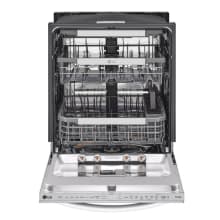
The LG LDTH7972S is a top-notch dishwasher with powerful cleaning cycles and impressive drying times with heated dry.
The Bosch 500 Series is our favorite evaporation-drying dishwasher.
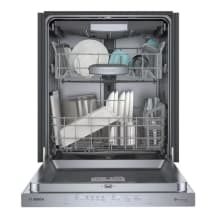
This sleek 500 series Bosch dishwasher will give your dishes a decent cleaning, and features AutoAir automatic door opening to aid drying.
Our top budget dishwasher, the Maytag MDB4949SKZ, uses a heated coil to dry dishes.

This Maytag dishwasher is excellent at cleaning dishes and uses a heated coil to fully dry dishes.
Energy efficiency of dishwashers
The drying method significantly affects the overall energy consumption of a dishwasher. Models with a heated drying element consume the most energy. In contrast, fan-assisted drying and condensation drying use much less electricity, but may sacrifice some drying performance, especially on plastic items, which retain moisture more easily.
Dishwashers with mineral drying technology use slightly more energy than fan-assisted drying, but achieve far better results, and according to Energy Star, a Bosch with CrystalDry only uses 13 kWh/yr more than the Miele G 5892 SCVi SL, which is rated the most energy-efficient dishwasher and uses condensation and fan-assisted drying.
When selecting an energy-efficient dishwasher, look for models with the Energy Star label, which indicates compliance with strict energy-saving standards. These models often feature soil sensors, energy-efficient motors, and advanced drying technologies. Choosing a dishwasher with an "air-dry" or "eco-dry" option can further reduce energy use.
To further manage the energy consumption of a dishwasher, it’s also helpful to select a model with multiple cycle options that can tailor water and energy use to the load’s size and soil level. While energy-efficient models may have a higher upfront cost, they can significantly lower utility bills over time.
What is rinse aid, and can it help?
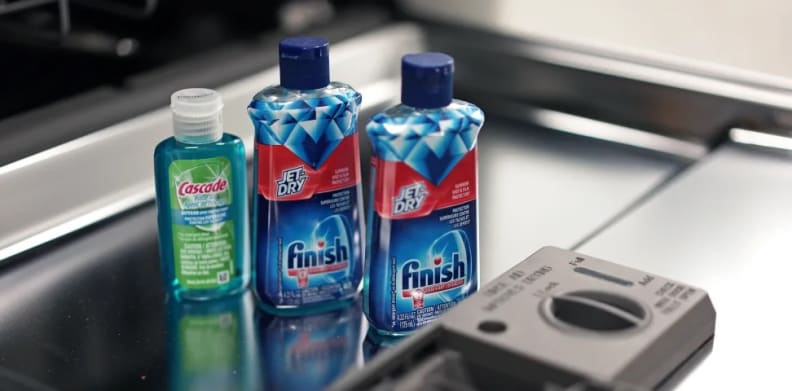
Rise aid may be better-named drying aid as it helps ensure water droplets slide off dishes and glassware, rather than cling to them.
Despite its name, rinse aid doesn't actually aid in rinsing your dishes. It may be called that because it’s introduced during the rising phase. Instead, it helps remove moisture from flatware, plates, bowls, and glasses. Really, it's more of a drying aid.
Rinse aid contains chemicals called surfactants, which lower the surface tension of water. So, instead of forming droplets, the water spreads into thinner sheets that slide off your dishes.
If you start to see spots on your glassware, or your dishes aren’t getting as dry as they usually do, check your rinse aid level. It’s likely time for a refill.
